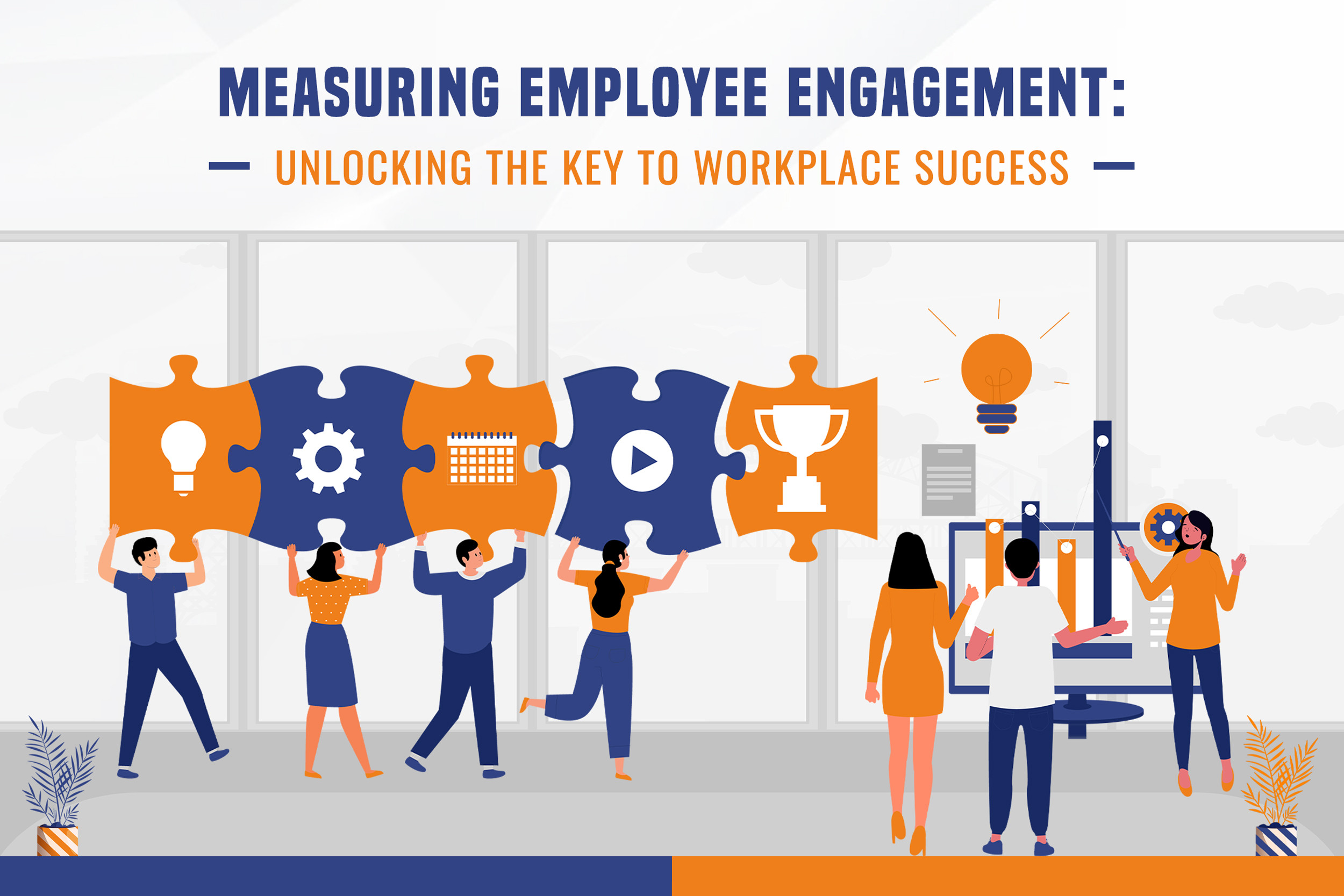
Measuring Employee Engagement: Unlocking the Key to Workplace Success
Employee engagement stands as a pivotal element within every prosperous organization. Engaged employees are driven, efficient, and dedicated to their tasks. It leads to a positive work environment, increased retention rates, and ultimately, improved business outcomes. In this article, we will delve into the importance of Measuring Employee Engagement and how it unlocks the key to workplace success. We will explore various strategies, tools, and best practices that organizations can adopt to foster a culture of engagement and drive their teams toward greater heights.
Why Measure Employee Engagement?
Measuring Employee Engagement is crucial for organizations to understand the level of commitment and satisfaction among their employees. By quantifying engagement, companies can identify areas that need improvement, recognize outstanding performers, and create actionable plans such as investing in relevant Leadership Skills Development Training for enhancing workplace satisfaction. When employees feel valued and heard, they are more likely to contribute their best efforts to achieve common goals.
The Impact of Employee Engagement on Workplace Success
The impact of employee engagement on workplace success is profound. Highly engaged employees play a crucial role in a company's overall achievements. Their proactive, innovative, and customer-oriented approach leads to enhanced productivity and the delivery of higher-quality products and services. Moreover, engaged employees exhibit lower absenteeism rates and contribute to a reduction in workplace conflicts, fostering a positive and harmonious work atmosphere. As a result, organizations with engaged teams experience improved efficiency and effectiveness, ultimately paving the way for greater success in their respective industries.
The Challenges of Measuring Employee Engagement
While measuring employee engagement is essential, it comes with its own set of challenges. Employees might fear retaliation or anonymity breaches, leading to inaccurate responses in surveys. Moreover, interpreting and acting upon the collected data requires skilled HR professionals. Companies must address these challenges and ensure confidentiality and transparency throughout the process.
Measuring Employee Engagement: Metrics and Tools
To effectively measure employee engagement, organizations can utilize various metrics and tools. These include:
1. Employee Engagement Surveys
Employee engagement surveys play a pivotal role in organizations' quest to understand their workforce better. By gathering direct insights from employees, these surveys provide invaluable feedback on various aspects like job satisfaction, work-life balance, and leadership effectiveness. Armed with this information, companies gain a deeper understanding of employee sentiments and can pinpoint areas that require attention and improvement.
They can also invest in new Leadership Training Courses Online based on these surveys. Conducted annually or semi-annually, these surveys serve as powerful tools to track progress over time, assess the impact of implemented changes, and foster a culture of continuous improvement and engagement within the organization.
2. Performance Reviews and Feedback
Integrating employee engagement-related questions into performance reviews offers a valuable vantage point to assess an employee's dedication and job contentment. By including such inquiries, organizations gain deeper insights into the level of engagement exhibited by their team members, identifying potential areas for improvement and recognition.
Additionally, regular feedback sessions provide a supportive environment where employees feel valued and appreciated, fostering a sense of belonging and motivation. The combination of performance evaluations and ongoing feedback contributes to a more holistic understanding of employee engagement, enabling companies to develop targeted strategies to enhance overall satisfaction and productivity within their workforce.
3. Pulse Surveys
Pulse surveys are an agile approach to capturing real-time employee sentiments. Conducted frequently and with brevity, these surveys provide organizations with quick snapshots of the workforce's emotional landscape. By promptly assessing employee feelings, organizations can proactively address emerging issues, ensuring a supportive and responsive work environment.
These nimble check-ins also serve as tangible evidence of a company's commitment to employee well-being, promoting trust and open communication within the organization along with better Leadership Training and Development. Pulse surveys empower companies to stay connected with their employees' ever-changing needs and concerns, enabling them to make informed decisions and implement targeted interventions to bolster overall employee engagement and satisfaction.
4. Social Network Analysis
Social Network Analysis (SNA) is a powerful tool that delves into the intricate web of relationships and communication patterns among employees within an organization. By mapping these connections, SNA reveals key influencers and the flow of information across teams and departments. This invaluable insight allows companies to pinpoint influential individuals whose engagement can have a ripple effect on the entire workforce.
Moreover, SNA identifies potential communication bottlenecks, enabling targeted efforts to foster collaboration and open channels for meaningful interactions. By leveraging SNA, organizations gain a comprehensive understanding of their social dynamics, empowering them to cultivate a cohesive and engaged workforce that thrives on effective communication and collaborative efforts.
Strategies to Improve Employee Engagement
Enhancing employee engagement requires a proactive approach. Here are impactful strategies for organizations to adopt:
-
Foster a Positive Work Culture
Creating a positive work culture that encourages open communication, recognizes achievements, and values employees' contributions fosters a sense of belonging and loyalty among the workforce.
-
Empower Employees
Empowering employees by delegating responsibilities and providing opportunities for growth in the form of Leadership Skills Development Training helps boost engagement and confidence.
-
Work-Life Balance
Supporting work-life balance through flexible work arrangements and wellness programs promotes employee well-being and reduces burnout.
-
Recognize and Reward
Implementing a robust recognition and rewards program acknowledges and appreciates employees' efforts, reinforcing a culture of appreciation and motivation.
Final Words
Measuring Employee Engagement is a crucial step in unlocking the key to workplace success. Organizations that prioritize engagement reap the benefits of a motivated and committed workforce, leading to improved productivity and overall success. By utilizing effective metrics, tools, and strategies, companies can create a positive work culture that fosters employee satisfaction, well-being, and growth. Embracing employee engagement as a top priority ensures a thriving and harmonious workplace, setting the stage for continued success and prosperity.
